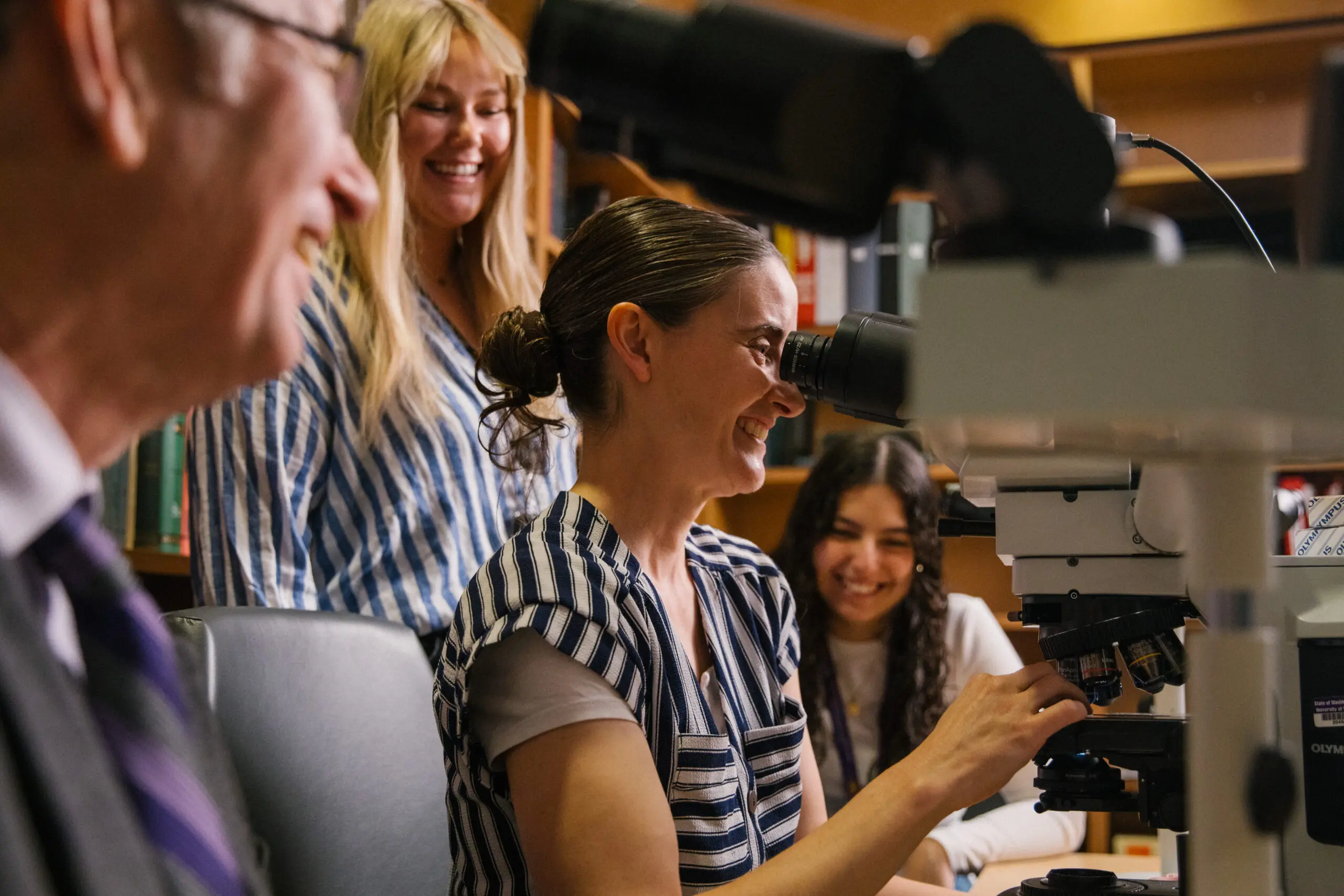Wendy Chapman was an impossibility. At least, that’s what ophthalmology researcher Jay Neitz, Ph.D., thought.
When Neitz heard that Chapman was color-blind in just one eye — had been born that way — he was skeptical. Hundreds of years of research indicated that her case couldn’t and shouldn’t exist. But still, Neitz wondered, could Chapman be the one in a million he had been searching for all these years?
Unraveling Color-blindness
Color-blindness is the inability to distinguish between certain colors, like red and green. It’s a common genetic disorder, affecting 1 in 12 men and 1 in 220 women in the United States. Neitz, the Bishop Professor in Ophthalmology, and his wife, Maureen Neitz, Ph.D., the Ray H. Hill Endowed Chair in Ophthalmology, have been researching retinal disorders like color-blindness since 1986.
The Neitzes, part of the UW Medicine Eye Institute and Vision Sciences Center, have made significant progress in understanding the causes of color-blindness. Cone cells, found in the retina, contain photopigments that perceive color. A common source of color-blindness is the loss of the gene for red or green photopigments.
The Neitzes have also created a more accurate diagnostic tool — the most widely sold color vision test in the United States — and are in the process of developing a cure for color-blindness using gene therapy. But despite all their achievements, there was one question that they and other researchers still couldn’t answer.
What does someone who is color-blind really see?
An Impossible Dream

That question is difficult to answer. Colors are nuanced phenomena, sight is subjective; how people refer to colors varies from person to person. The matter is made even more complicated by the actual visual experience of people who are color-blind; they can pick up on social and environmental cues that help them decipher colors. For example, it’s common cultural knowledge that apples are associated with the color red, and trees are usually green.
Many scientists, including Neitz, have fantasized about finding someone who is red-green color-blind in one eye and has normal vision in the other. “Not only to understand what they actually see, but also to explore the genetic basis of such an unusual condition,” says Neitz. But study after study left researchers empty-handed.
Neitz had all but given up on his dream when, in 2016, an ophthalmologist approached him after a continuing education workshop and claimed the impossible — he was treating a patient who was color-blind in one eye. That patient was Wendy Chapman, a retired schoolteacher.
Chapman first understood that something was awry with her vision when she was examining a slide under a microscope in a college zoology class. If she looked with one eye, the slide was pink, and if she looked with the other, it was blue. “At first I thought someone was playing a trick on me, but then I realized, ‘My God, there’s a difference in my eyes!’” says Chapman.
A Thrilling Discovery
When Chapman and Neitz met, Neitz administered a battery of tests. The results shocked him. Sitting before him was the first documented person in history to have inherited red-green color-blindness in one eye and normal color vision in the other.
“I had been bracing myself to explain to her that she was mistaken about her condition, so I felt this huge wave of relief. It was thrilling,” says Neitz.
So what could cause Chapman’s color-blindness to manifest in only one eye? In every gene, there are regulatory elements that decide what particular cells are going to be: a cone cell with green photopigment, for example, or one with red photopigment.
“I think Wendy has a mutation in the regulatory region of her color-blind eye that’s keeping it from making red or green photopigment,” says Neitz. Chapman has donated some of her genes so Neitz can continue to explore the root of her condition.
What Chapman Sees
As for the burning question — what do color-blind people really see? — Chapman can offer an answer.
With both eyes open, Chapman sees in full color. However, if she covers the eye that has normal vision, her world suddenly changes. “Something that’s usually red or green is just gray — there’s no actual color,” says Chapman. And the differences don’t stop there. Shades of orange all look yellow. And magenta and purple appear blue.
While deficiencies in color vision didn’t cause problems for Chapman, that’s not the case for those who are color-blind in both eyes. “Aesthetic issues aside, color-blindness can keep people from doing what they love,” says Neitz. Police officer, firefighter, pilot, nurse — these are just a few of the professions that are off limits to people who are color-blind.
Chapman, who understands what it’s like to see with normal color vision and without, has become an advocate for the Neitzes’ gene therapy research.
“I don’t know what I’d do if I ever lost vision in my right eye, the one that sees color,” says Chapman. “Their gene therapy work is so important. Opening up someone’s world to include full color is life-changing.”

